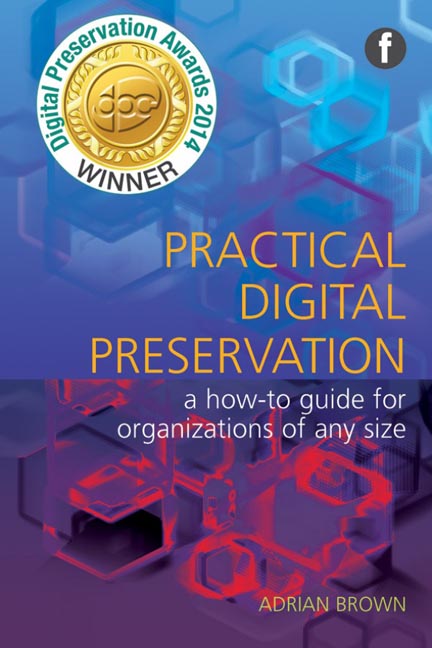Book contents
- Frontmatter
- Contents
- Acknowledgements
- Glossary
- 1 Introduction
- 2 Making the case for digital preservation
- 3 Understanding your requirements
- 4 Models for implementing a digital preservation service
- 5 Selecting and acquiring digital objects
- 6 Accessioning and ingesting digital objects
- 7 Describing digital objects
- 8 Preserving digital objects
- 9 Providing access to users
- 10 Future trends
- Appendices
- Bibliography
- Index
7 - Describing digital objects
Published online by Cambridge University Press: 08 June 2018
- Frontmatter
- Contents
- Acknowledgements
- Glossary
- 1 Introduction
- 2 Making the case for digital preservation
- 3 Understanding your requirements
- 4 Models for implementing a digital preservation service
- 5 Selecting and acquiring digital objects
- 6 Accessioning and ingesting digital objects
- 7 Describing digital objects
- 8 Preserving digital objects
- 9 Providing access to users
- 10 Future trends
- Appendices
- Bibliography
- Index
Summary
Introduction
It is impossible to manage any collection without some form of systematic description and documentation of its constituent parts. The catalogue has long been the fundamental tool of curators and information managers, and this remains ever more true in the world of digital collections, which have an even greater reliance on detailed, technical description, or metadata.
Metadata is often described as ‘data about data’. While correct, this rather glib definition is not necessarily very helpful. A less succinct but perhaps more informative definition might be:
The set of information required to enable content to be discovered, managed and used by both human agents and automated systems.
When developing a digital repository, you will need to consider metadata from two viewpoints:
• the minimum mandatory metadata that is always required to enable management of repository content
• the range of allowable metadata that you may wish to acquire if it is available.
You need to define a metadata standard that addresses both points, and determine how that standard will operate in practice.
Working with metadata is often perceived as a daunting challenge, a view undoubtedly reinforced by the bewildering plethora of standards available. This chapter provides guidance on choosing the metadata you need to support a digital preservation repository, how to acquire it, and how it can be stored and managed. It begins by discussing the role of metadata, and the different types of metadata you need to consider. It then provides an overview of the main metadata standards available, and how to choose among them. Next, it considers the various methods for creating and capturing metadata, and for managing it as part of a digital repository. It ends with three case studies, which exemplify this guidance.
The role of metadata
Metadata can serve a multitude of purposes. Certain types of metadata are always required, while others may only be necessary in particular scenarios. Broadly, a distinction can be drawn between descriptive metadata, which documents the content of the object of interest and supports its intellectual management, and technical metadata, which describes its technical characteristics and supports its preservation management.
- Type
- Chapter
- Information
- Practical Digital PreservationA how-to guide for organizations of any size, pp. 155 - 192Publisher: FacetPrint publication year: 2013



